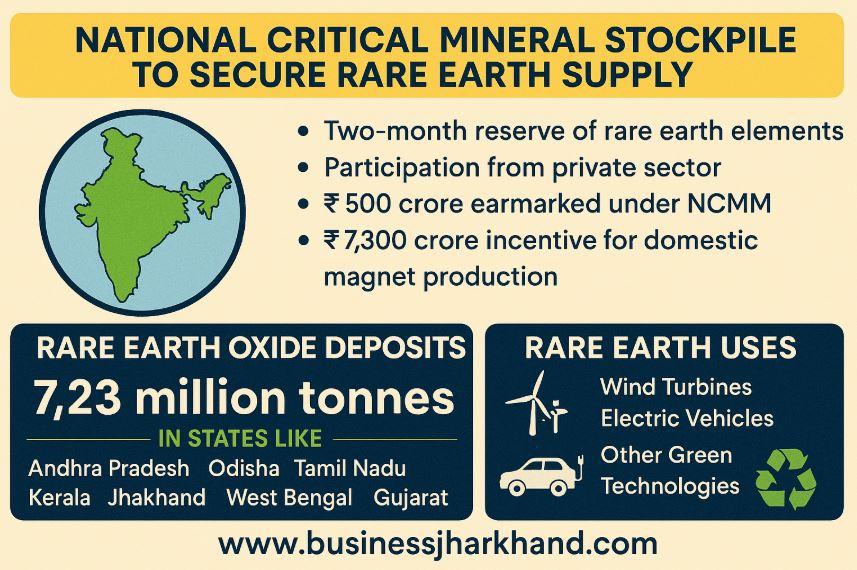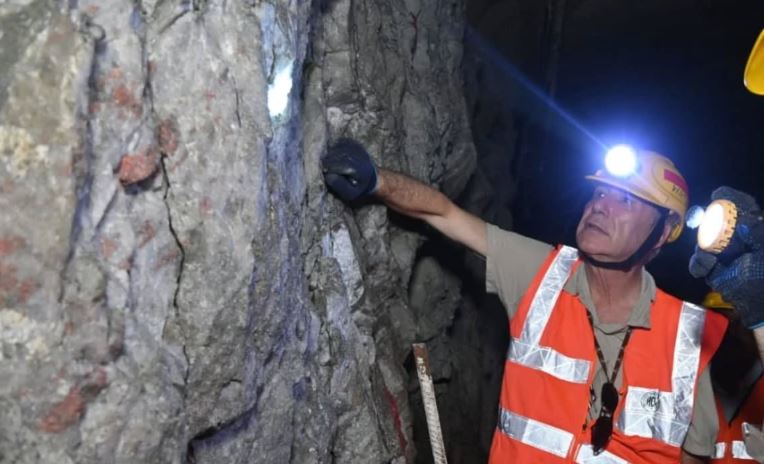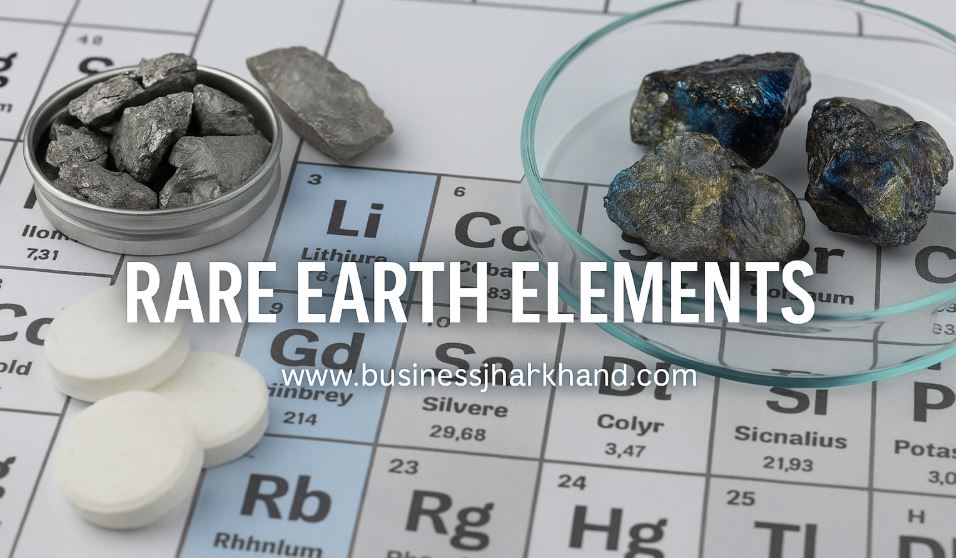India is set to launch the National Critical Mineral Stockpile (NCMS) to ensure the steady availability of rare earth elements to safeguard its green technology ambitions. The initiative, aimed at building a two-month reserve, comes amid rising concerns over global supply chain vulnerabilities following China’s export curbs on rare earth magnets, essential components for electric vehicles, wind turbines, and other renewable technologies.
Also Read: Government Tasked Seven National Institutes to Lead R&D on Lithium, Cobalt, Rare Earth Metals
Two-Month Reserve and Private Sector Participation Planned
According to senior officials, the NCMS will initially focus on stockpiling rare earth elements while inviting private players to participate in procurement and management. “The plan is to create a two month reserve of rare earth elements under the NCMS, with a scope to expand it later to other critical minerals,” a senior government official said. The move aligns with the Government’s efforts under the National Critical Minerals Mission, which has already earmarked Rs. 500 crores to secure mineral availability for domestic use.

The programme also complements a recently approved Rs. 7300 crores incentive scheme to promote domestic rare earth magnet manufacturing, targeting 6000 tonnes of output over the next five years. The inter ministerial panel overseeing the initiative aims to reduce dependence on imports and support the transition to clean energy technologies.
Also Read: CMPDI Received Exploration Licence for Rare Earth Block in Rajasthan
Strategic Move Amid Global Trade Tensions
India’s decision comes as geopolitical tensions reshape global trade in strategic resources. China, which controls over 80% of the global rare earth supply, has tightened export restrictions, affecting manufacturing sectors worldwide. In response, countries like the United States and Japan have strengthened their stockpiling and supply diversification strategies. India’s move to build its own mineral buffer is being viewed as both a defensive and strategic economic measure.
Also Read: PM Modi Announced Satellite Campus of UK-India Critical Minerals Observatory at IIT (ISM) Dhanbad

Challenges Ahead in Extraction and Processing
While India possesses an estimated 7.23 million tonnes of rare earth oxides locked in monazite deposits across Andhra Pradesh, Odisha, Tamil Nadu, Kerala, Jharkhand, and other States, industry experts caution that the country’s limited technological capability in mineral extraction remains a hurdle. Most of India’s rare earth needs are currently met through imports.
Also Read: Ministry of Mines Announced Sixth Tranche of Critical Mineral Auctions
The Ministry of Mines has already conducted six rounds of auctions for 55 critical and strategic mineral blocks, of which 34 have been awarded. With the NCMS and allied policy interventions, India aims to bridge the gap between resource potential and industrial readiness, laying the foundation for long-term mineral security crucial to its clean energy and manufacturing future.
Also Read: Jharkhand High Court Ordered Suspension of All Sand Ghat Auction until PESA Rules Notified
Join the WhatsApp Group of Business Jharkhand to Stay tuned for all the latest updates of industrial-political developments in Jharkhand.


